"Narrative art tells the story of a society—most importantly, what the common beliefs are that hold it together."
—George Lucas
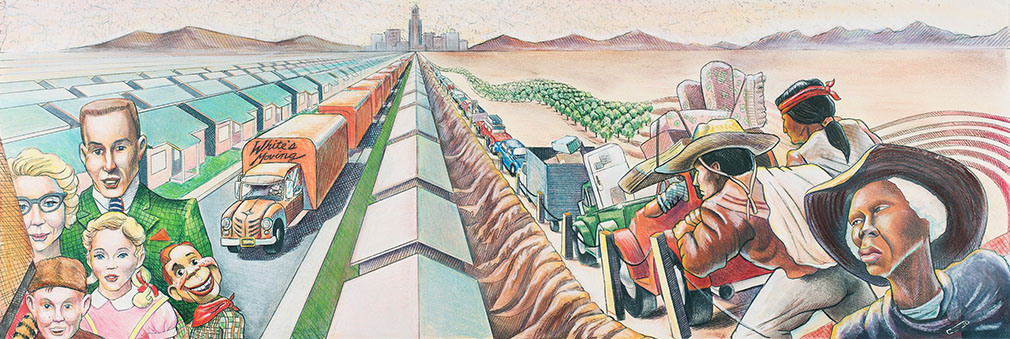
Judith F. Baca, final coloration for 1950: The Development of Suburbia, for The Great Wall of Los Angeles, 1983
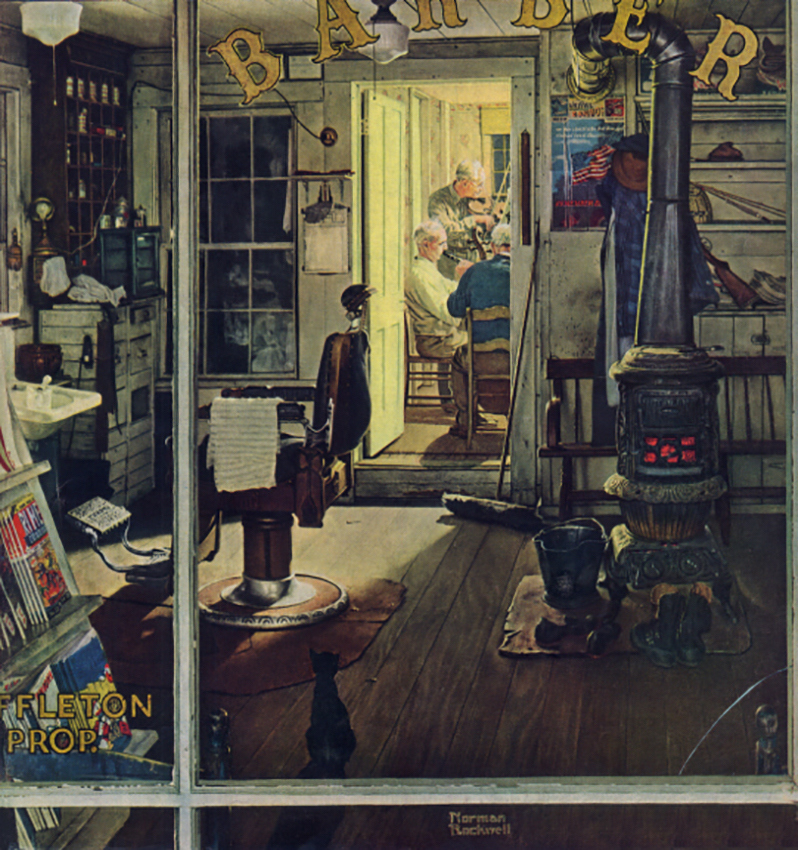
Norman Rockwell, Shuffleton's Barbershop, 1950
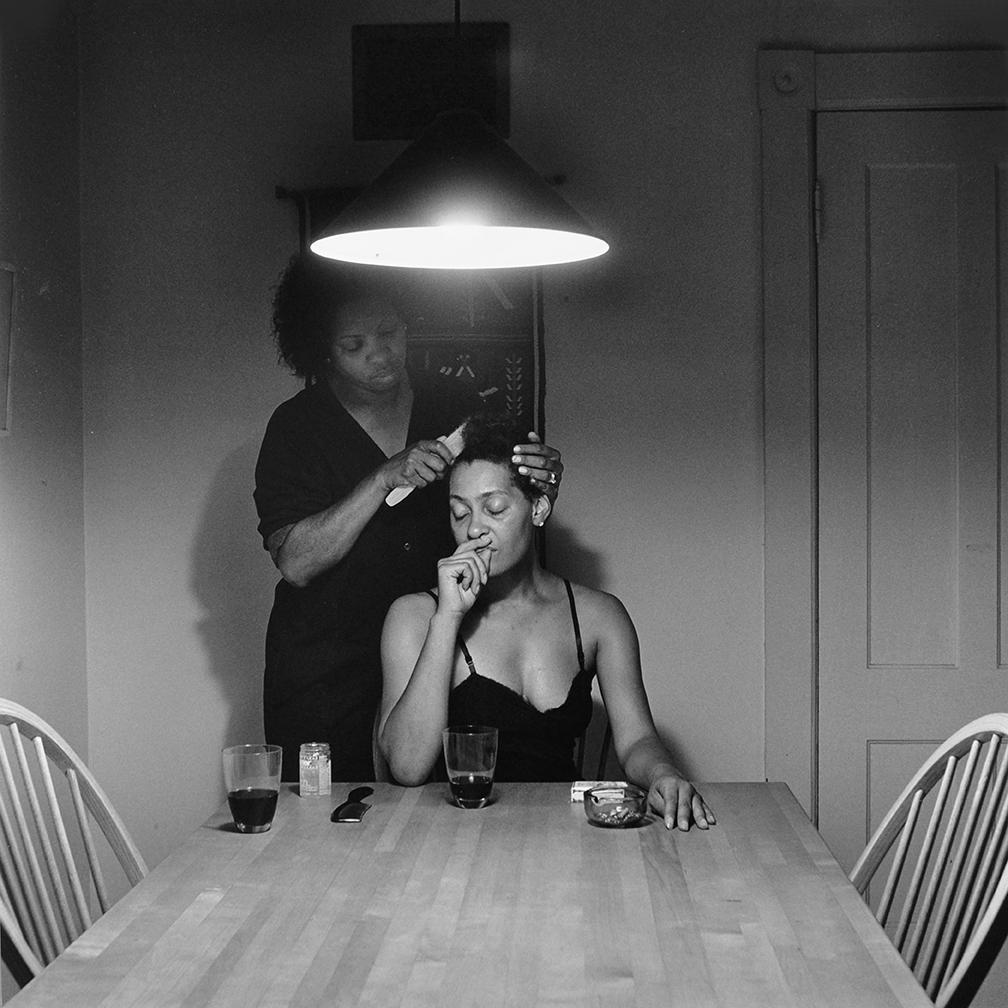
Carrie Mae Weems, Untitled, (Outtake from the Kitchen Table Series), 1990–92
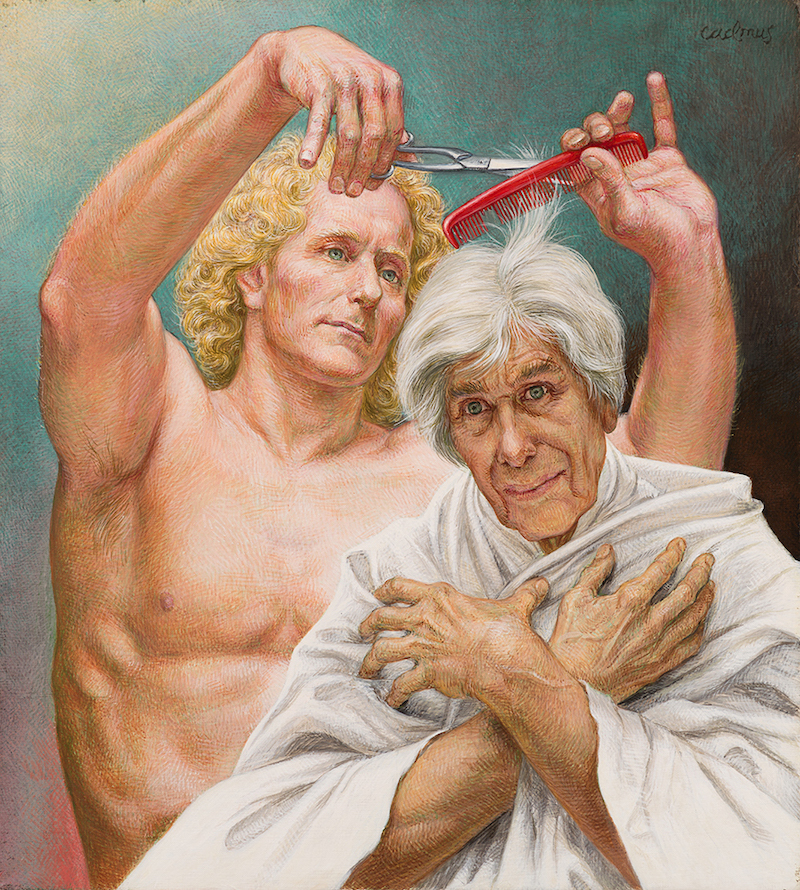
Paul Cadmus, The Haircut, 1986
Narratives are the stories we all live with. They inform how we view and understand the world, giving shape and character to real events, imagined realities, and systems of power. Narrative art gives visual form to specific stories and the meanings they contain. These stories may be readily apparent in the representation of action or intent. They also may be suggested through mood, atmosphere, or the use of iconography. The perspectives that viewers bring to artworks inform the narratives they convey. Reflecting human experiences and aspirations, narrative artworks can be read across time, culture, and language.
Although the term “narrative art” first appeared in the mid-1960s, visual storytelling has always been a central function of art. Much of the world’s artistic output is narrative, conveying stories rooted in religion, myth, legend, history, literature, or events. The narrative impulse has also thrived in cultures with non-figurative artistic traditions. Near the end of the nineteenth century, artists and critics in Europe and the United States advanced approaches to art that emphasized the formal qualities of a work over its narrative content. This perspective on art history has often overlooked or undervalued traditional modes of storytelling, as well as the proliferation of new narrative forms—such as the mass press, cinema, and advertising—that found their way into many aspects of everyday life. The role of narrative within artistic practice has evolved and expanded over time, and storytelling continues to resonate across all cultures.
The Lucas Museum of Narrative Art takes an inclusive approach to visual storytelling, exploring fine art and mass-produced art forms as well as new modes of creative practice. Encompassing all forms of visual narrative, including painting, sculpture, photography, video, and installation, narrative art can provide a window onto lived experience, elicit emotion, ignite imagination, or move us to action. We empower diverse audiences to connect and engage with artworks through the compelling stories they contain.

Jacob Lawrence, An Underground Railroad, 1967
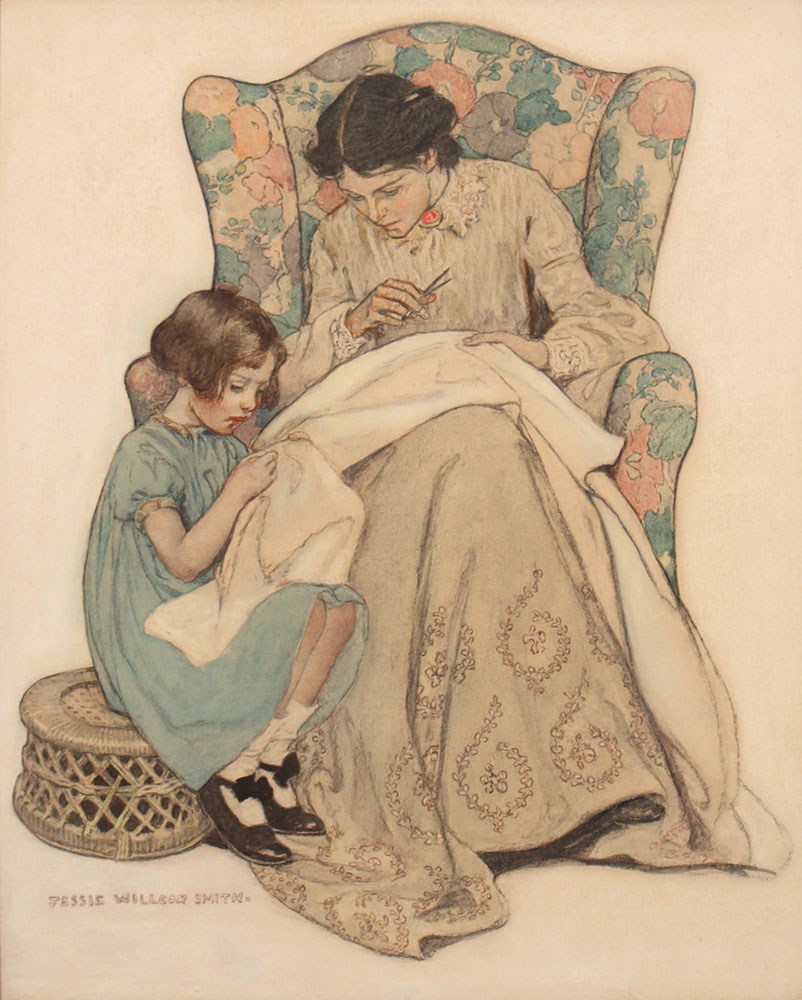
Jessie Willcox Smith, The Sewing Lesson, cover for Collier’s, 1907
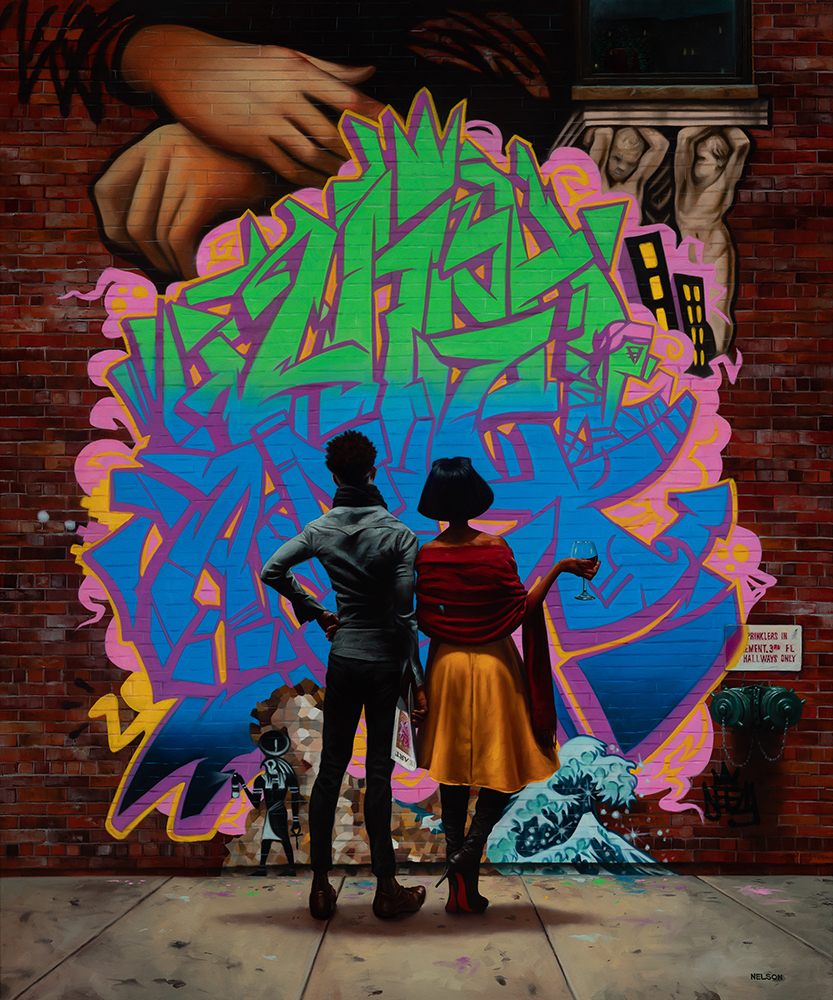
Kadir Nelson, Art Connoisseurs, 2019
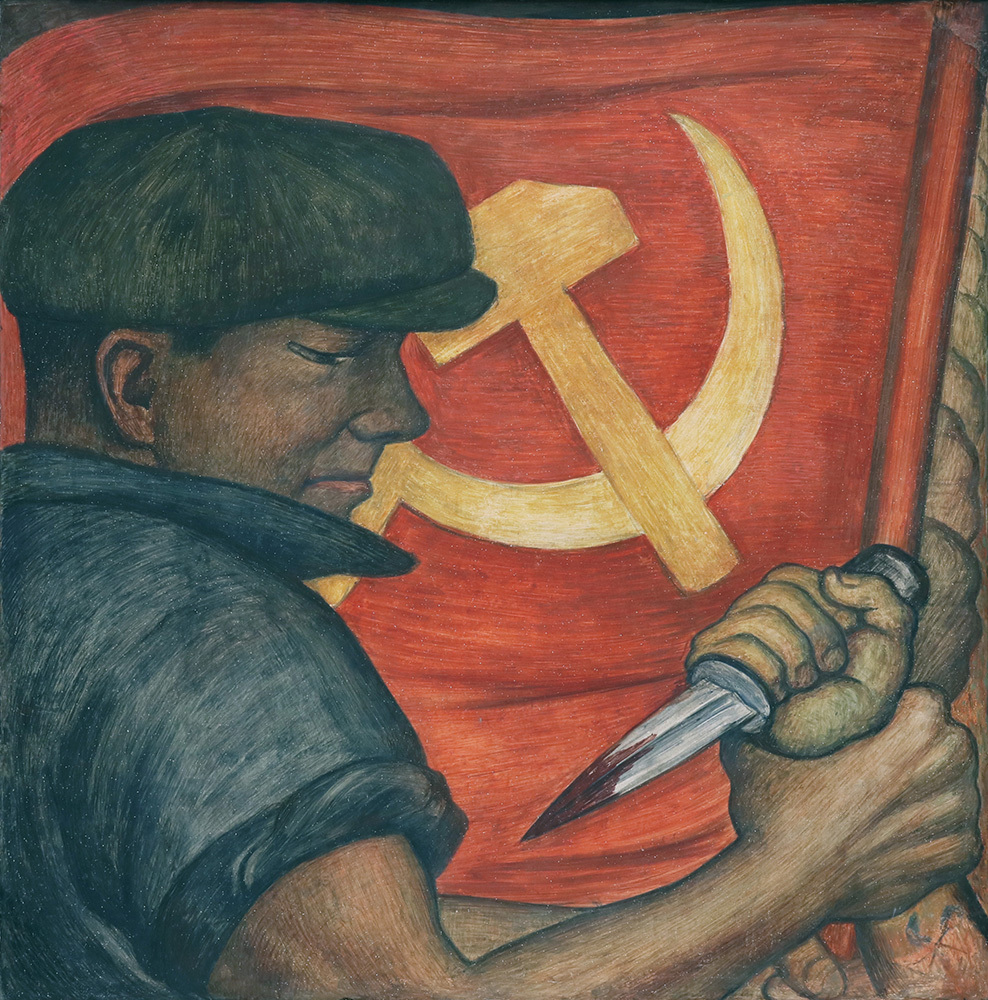
Diego Rivera, Opponent of Nazism, from Portrait of America, 1933

Charles White, presentation study for Mary McLeod Bethune Mural, 1977–78
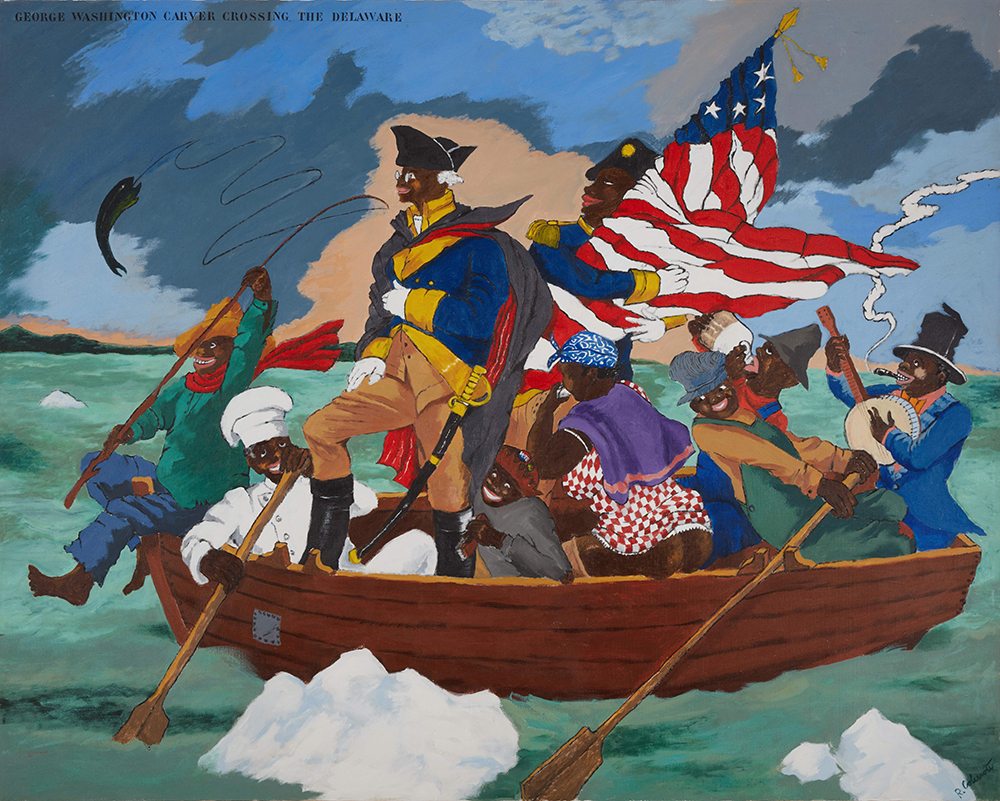
Robert Colescott, George Washington Carver Crossing the Delaware: Page from an American History Textbook, 1975

Jeffrey Catherine Jones, cover for Star Hunter & Voodoo Planet, 1968

Utagawa Kuniyoshi, Byoutsuchi Sonritsu (Sun Li), 1827-30
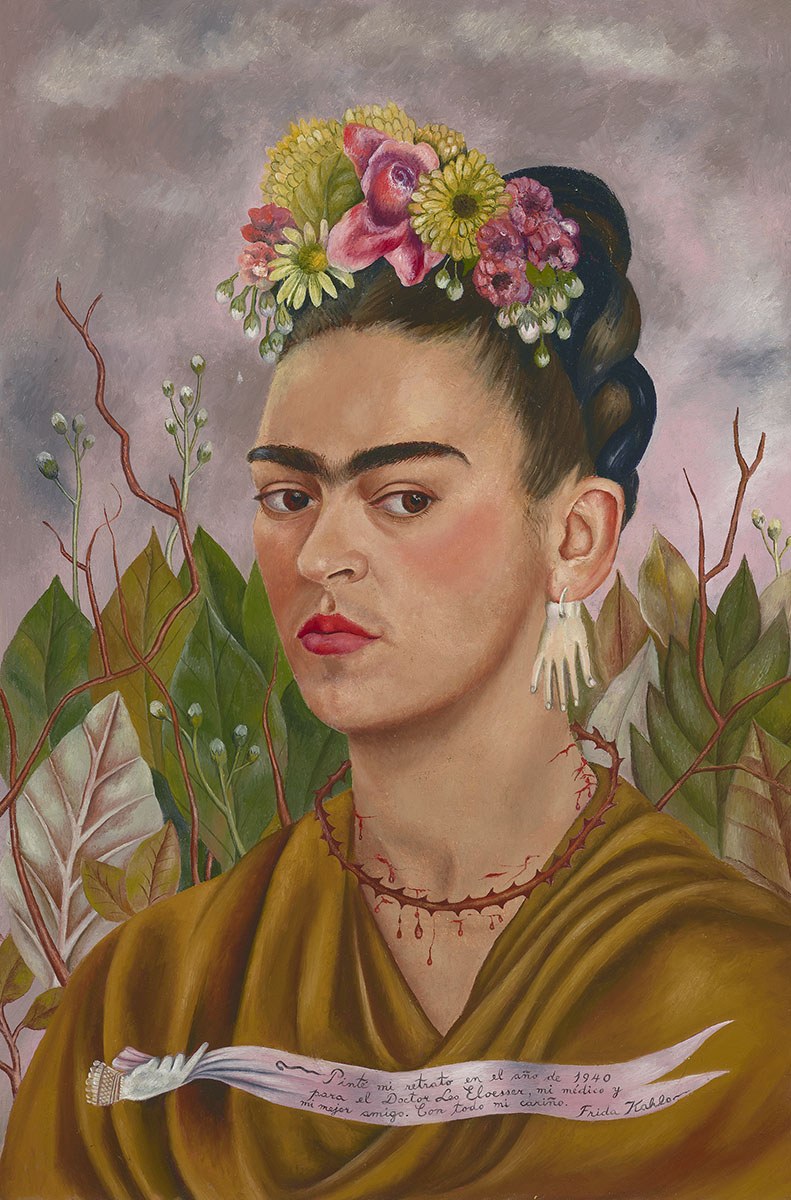
Frida Kahlo, Autorretrato dedicado al Dr. Eloesser (Self-Portrait Dedicated to Dr. Eloesser), 1940

Cara Romero, The Last Indian Market, 2015
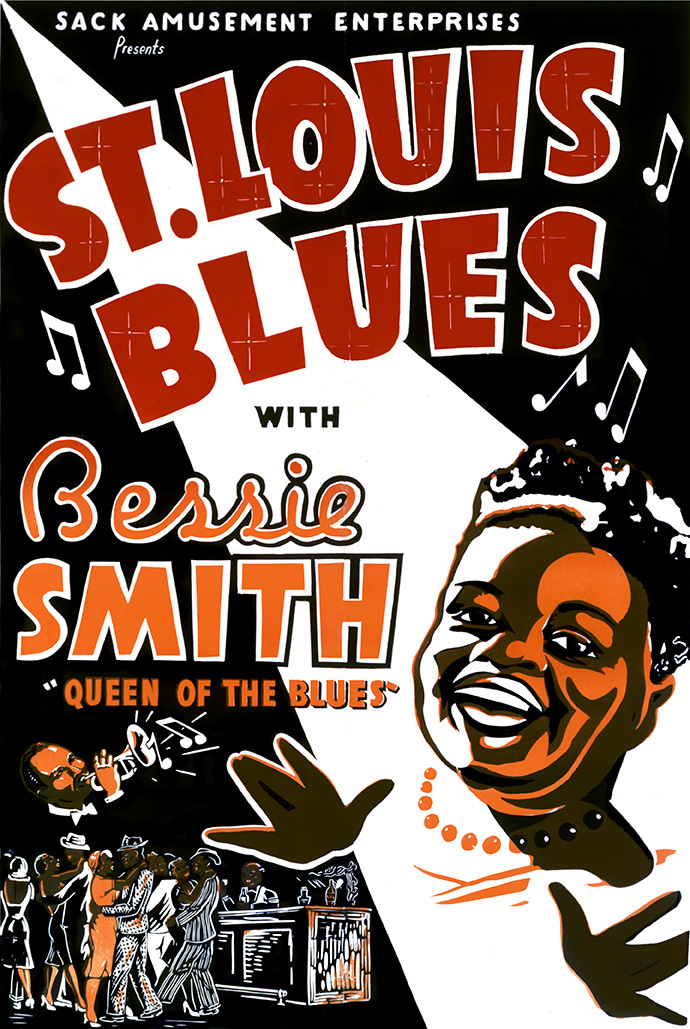
Poster for St. Louis Blues, 1929

Criselda Vasquez, The New American Gothic, 2017
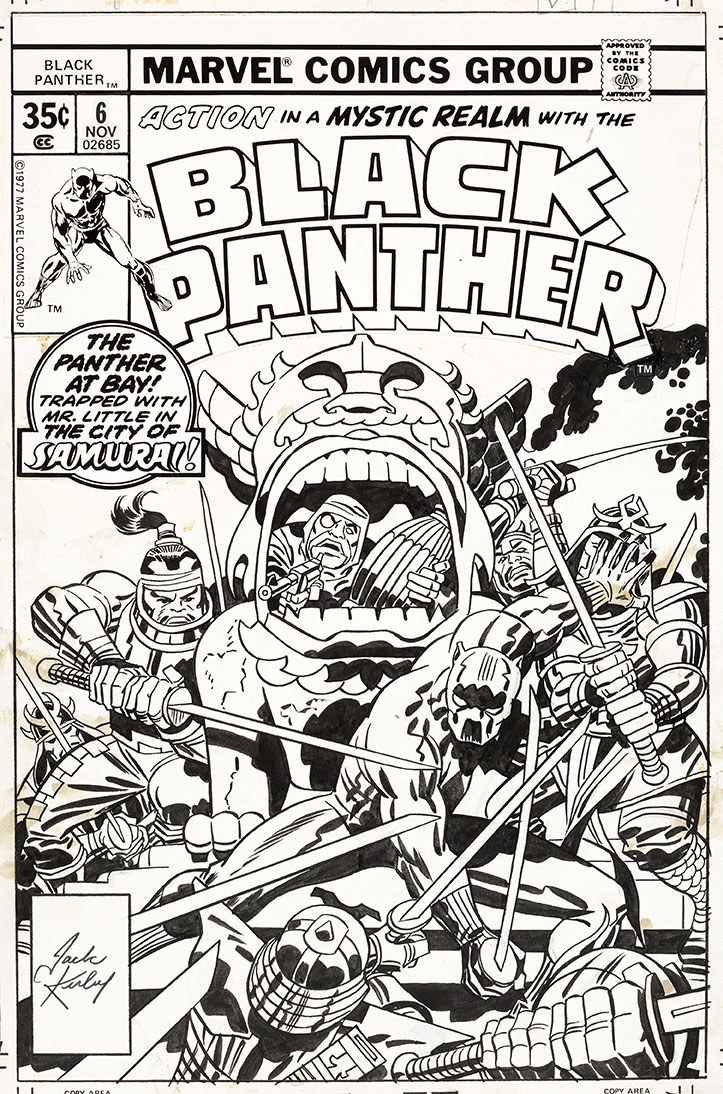
Jack Kirby (penciler) and Frank Giacoia (inker), cover for Black Panther, vol. 1, no. 6, 1977
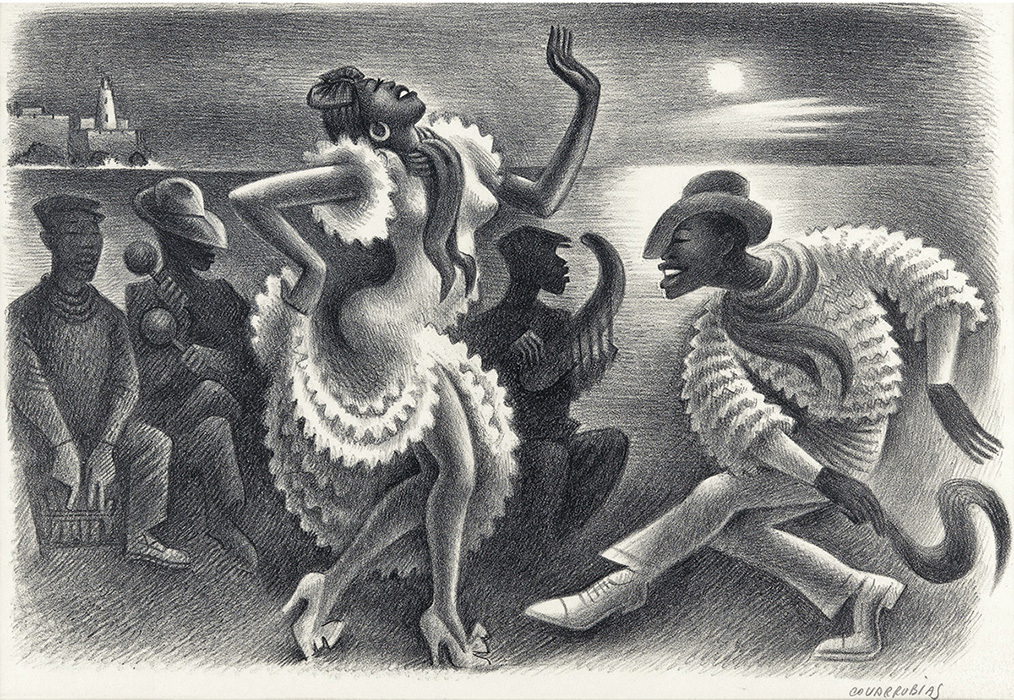
Miguel Covarrubias, Rumba, 1942
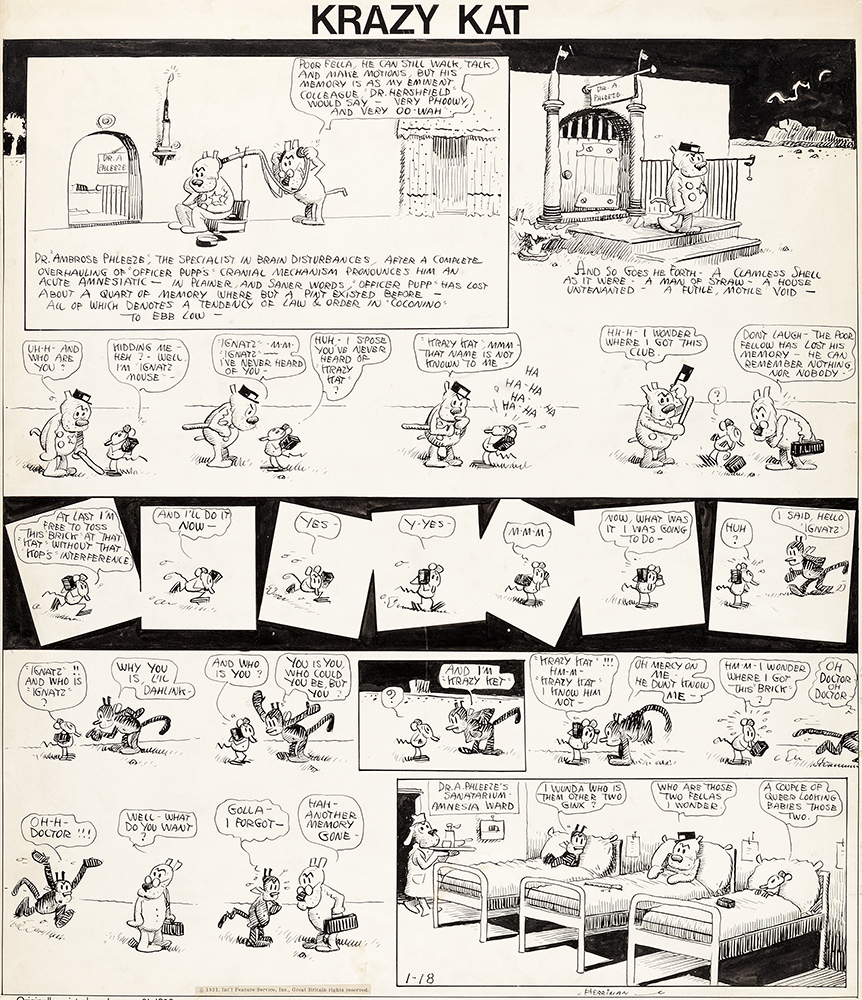
George Herriman, Krazy Kat Sunday strip, January 1923

Henri Cartier-Bresson, A farewell service for the late actor Danjuro at the Aoyama Funeral Hall, Tokyo, according to Shinto rites, 1965; printed c. 1990s

Ralph McQuarrie, production painting for Star Wars Episode IV: A New Hope (Artoo and Threepio leave the pod in the desert), January 31, 1975

Shepard Fairey and Ernesto Yerena, Immigration Reform Now!, 2010
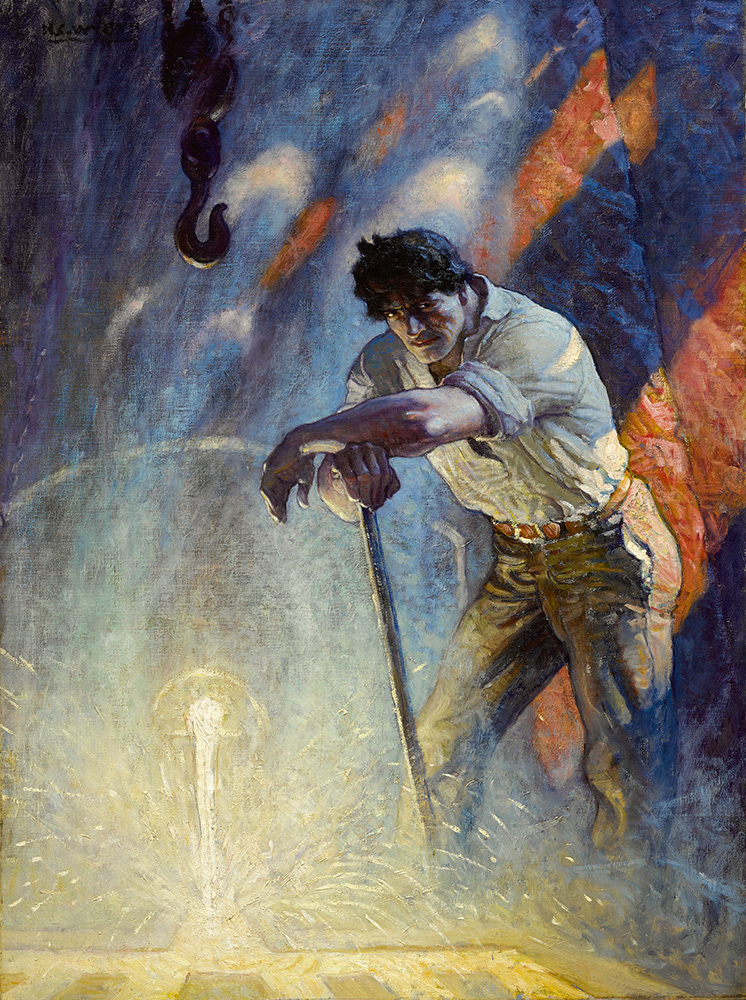
N. C. Wyeth, “Slag was a figure for sculptors” (1918), illustration for “The Mildest-Mannered Man,” Everybody’s Magazine, 1919
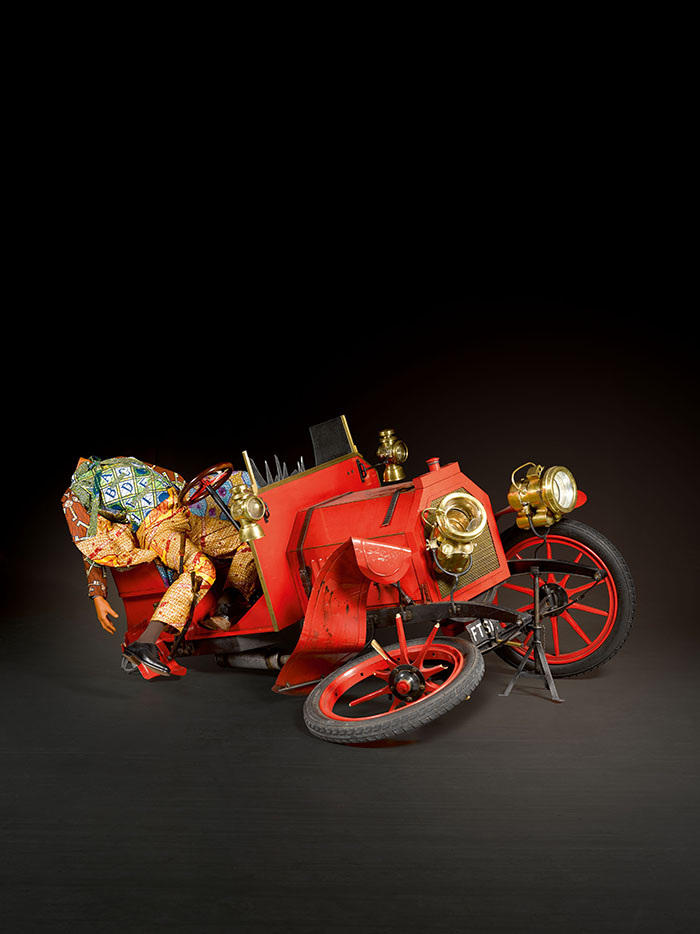
Yinka Shonibare, Crash Willy, 2009
